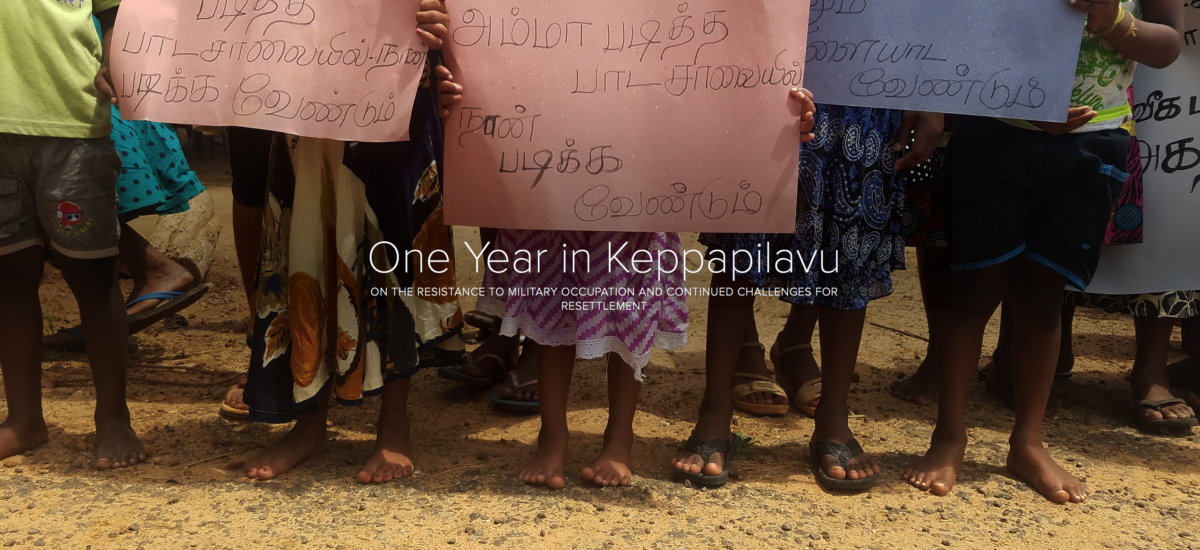The gates of the 59 Division Mullaitivu Security Forces Headquarters dominate the view 10 kilometres inwards from the Nandikadal lagoon and the Eastern coast. The protest tent a few metres away appears particularly small next to this towering presence. On March 1, the residents of Keppapilavu had been protesting for one year inside this tent. They are asking for the right to return to their ancestral lands, which lie within the bounds of the military complex.
Identified as one of the island’s most militarised areas, with nearly 60,000 troops (25% of the country’s active military personnel) stationed in the district, large swathes of land in Mullaitivu remain under military occupation, denying citizens of their ancestral lands and livelihood in the name of ‘national security’. Most recently, an RTI request revealed that 600 acres near the Nandikadal lagoon were being allocated for the SLNS Gotabaya camp, a move that was met with resistance from residents awaiting resettlement to that area.
This site is one of many citizen-led resistance movements that are being staged in the Northern and Eastern provinces that activists have documented on Groundviews over the last year. As the 37th session of the United Nations Human Rights Council are being held in Geneva, it is crucial that the statements or promises made by the Government on the international stage are critically examined in light of these ground realities.
View the story, compiled on Adobe Spark, here or scroll to view the embed below.


